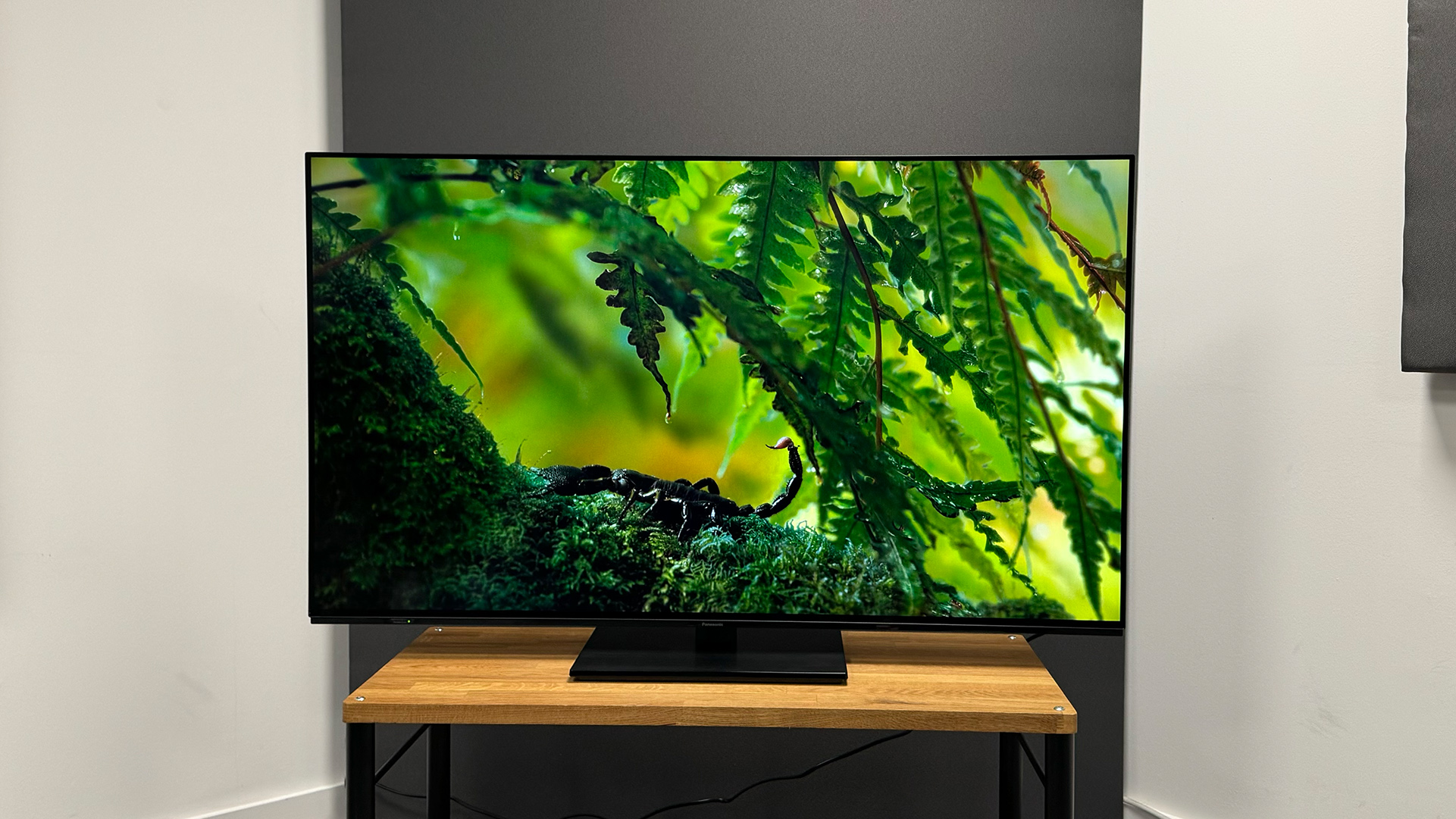What Hi-Fi? Verdict
Panasonic’s entry-level OLED delivers a wonderfully authentic picture, but there’s a key compromise
Pros
- +
Authentic, understated picture quality
- +
Complete HDR support
- +
Solid gaming specs
Cons
- -
Poor audio quality
- -
Even better TVs available for similar money
Why you can trust What Hi-Fi?
The Panasonic MZ980 is an OLED TV with big shoes to fill, being the successor to the Panasonic LZ980, which not only won a What Hi-Fi? Award last year but also remains one of the best value OLED sets on the market, at least while stocks last.
On top of that, it’s the most affordable option in Panasonic’s current line of OLEDs, sitting below the MZ1500 and MZ2000, and the only option if you want a 42- or 48-inch set. But is it worth your hard-earned money, especially considering the fact it costs the same amount as the Award-winning Sony A80L?
Price
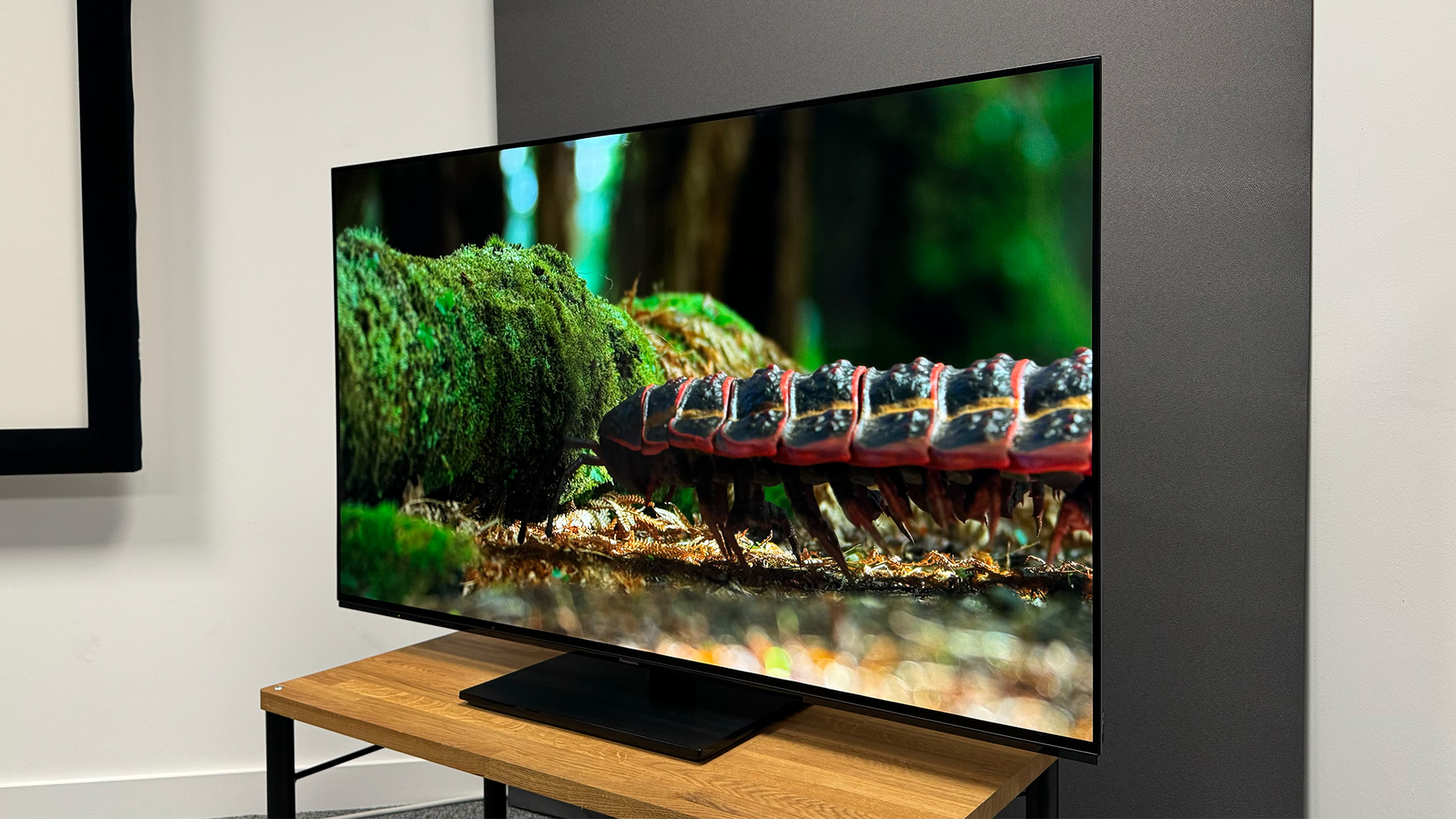
At launch, the MZ980 was a little on the expensive side, coming in at £2099 for the 55-inch model we're reviewing today. That's unfortunately been a theme of 2023, though – the LG C3 was just as expensive at launch.
Thankfully, prices have plummeted across the board and the MZ980 is now widely available for £1399. The Sony A80L and LG C3 are both £100 more expensive than the Panasonic at the time of writing, but both were cheaper just days ago. It's best to think of all three sets as being roughly the same price.
If you're eyeing up the Panasonic MZ980, you should probably also consider the MZ1500, which is usually (and currently) only a little more expensive.
Design
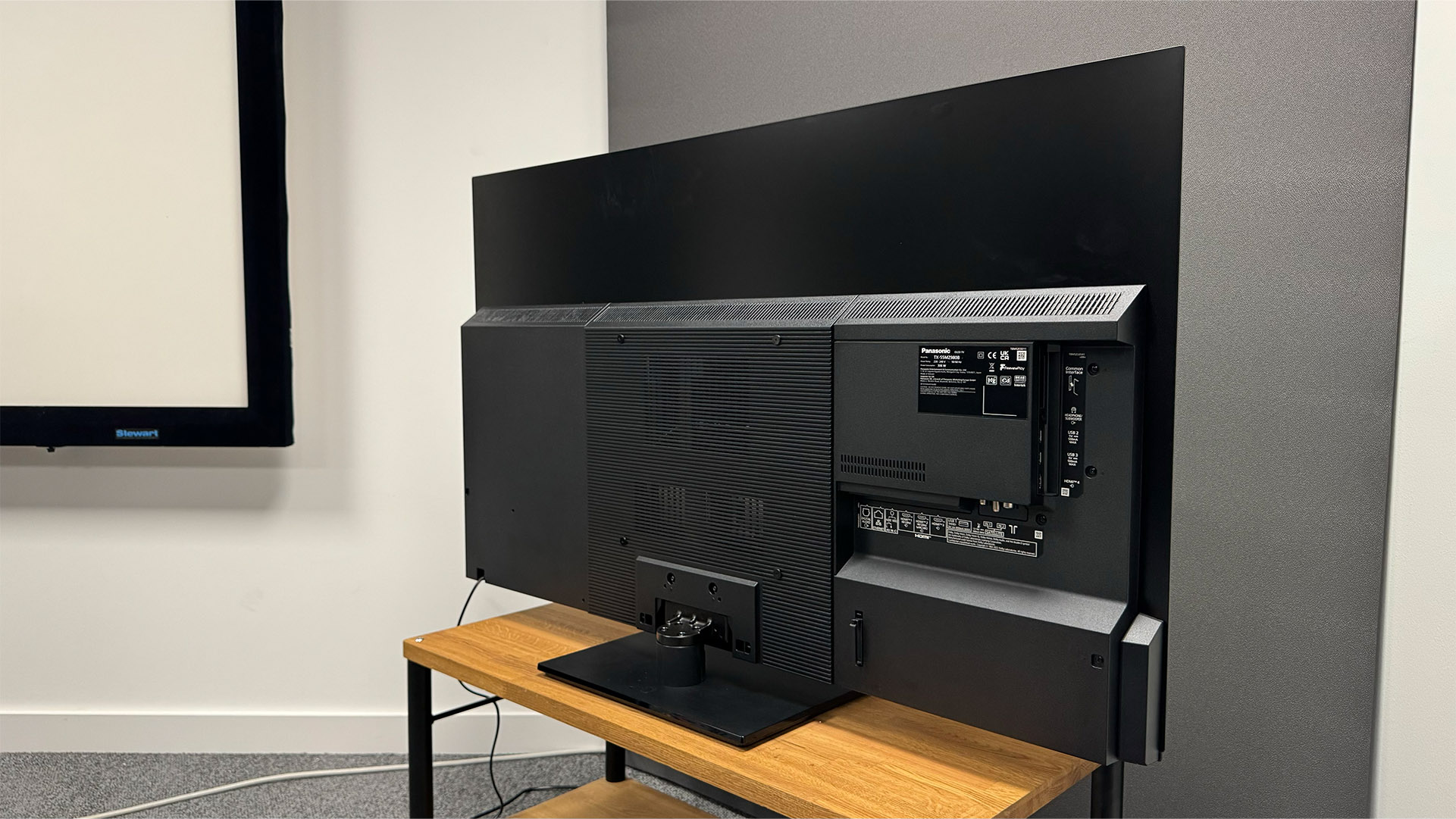
So, how does the MZ980 differ from the MZ1500? For starters, it doesn’t have a fancy swivel stand. Instead, it has a basic rectangular base that’s screwed to the back of the TV. This is a minor shame as the ability to pivot the TV to get quick access to ports on the fly is a feature we appreciate on the more expensive Panasonic MZ1500 and Panasonic MZ2000.
A big difference is that the TV doesn’t feature a dedicated speaker bar mounted beneath the screen. This is one of the biggest differences between it and its more expensive siblings. Some will see it as a negative but there is an alternative, more positive spin: we always recommend investing in a separate speaker system or soundbar when spending this much on a TV because TV speakers simply can’t match the performance of an external system due to space constraints, and the absence of a bar makes the MZ980 look much more discreet and it is significantly easier to slot a soundbar under it.
The remote is also identical in layout to the other Panasonic OLEDs we’ve tested this year, though it has a black rather than silver finish.
Features
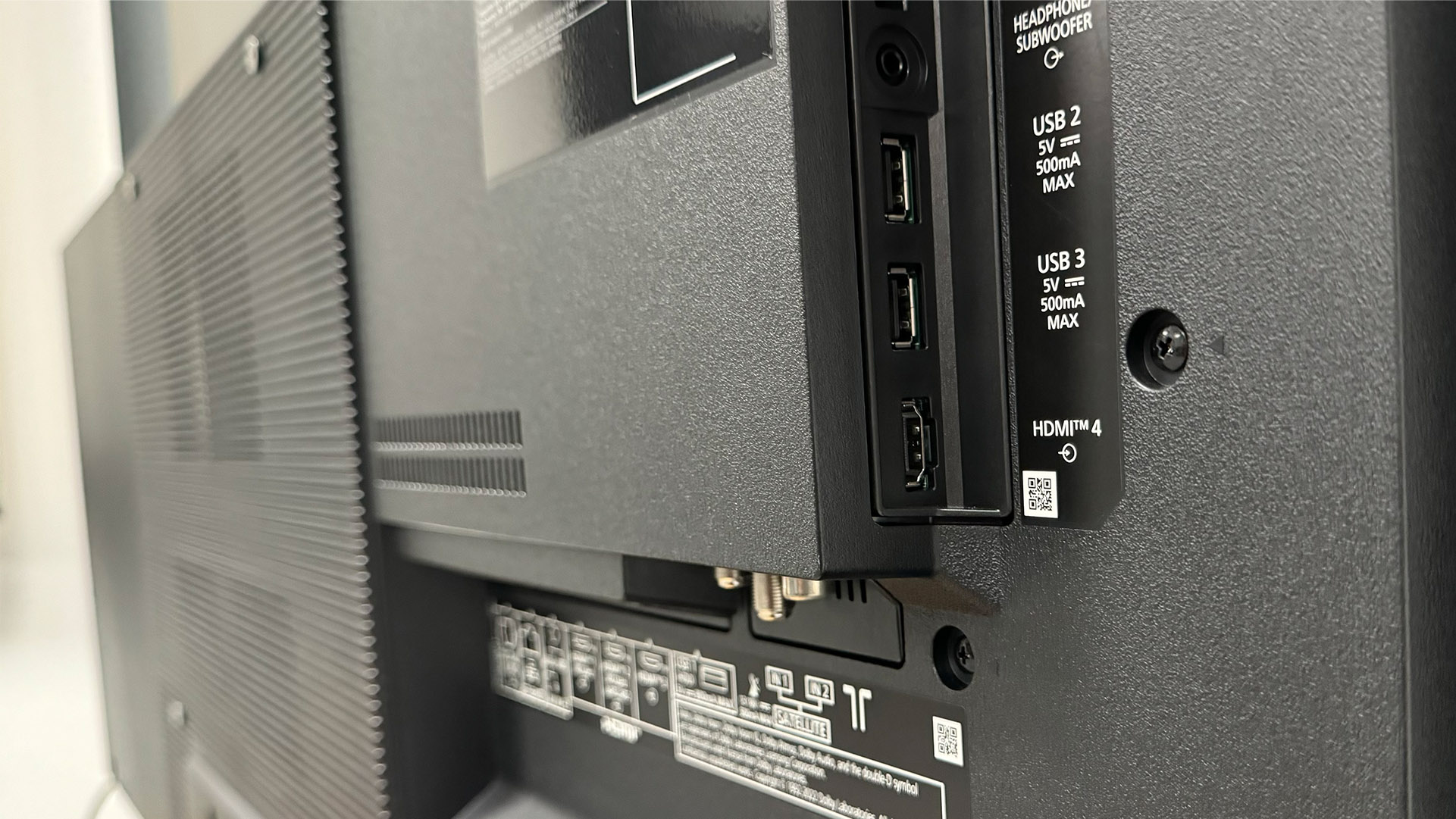
The third and final big difference between the MZ980 and the MZ1500 is that the former doesn’t feature a Panasonic Master OLED Pro panel. Instead, it features a regular OLED panel. This means it hasn’t had the extra fine-tuning and optimisations Panasonic does on its more expensive OLEDs to improve elements such as max brightness and colour authenticity. There’s also no brightness-boosting heatsink under the hood.
Outside of this, it has a very similar feature set to the MZ1500. It’s powered by the same HCX Pro AI processor, for starters. This is a big deal as the CPU is incredibly capable and means the MZ980 handles picture processing the same way and comes with a similarly impressive suite of features.
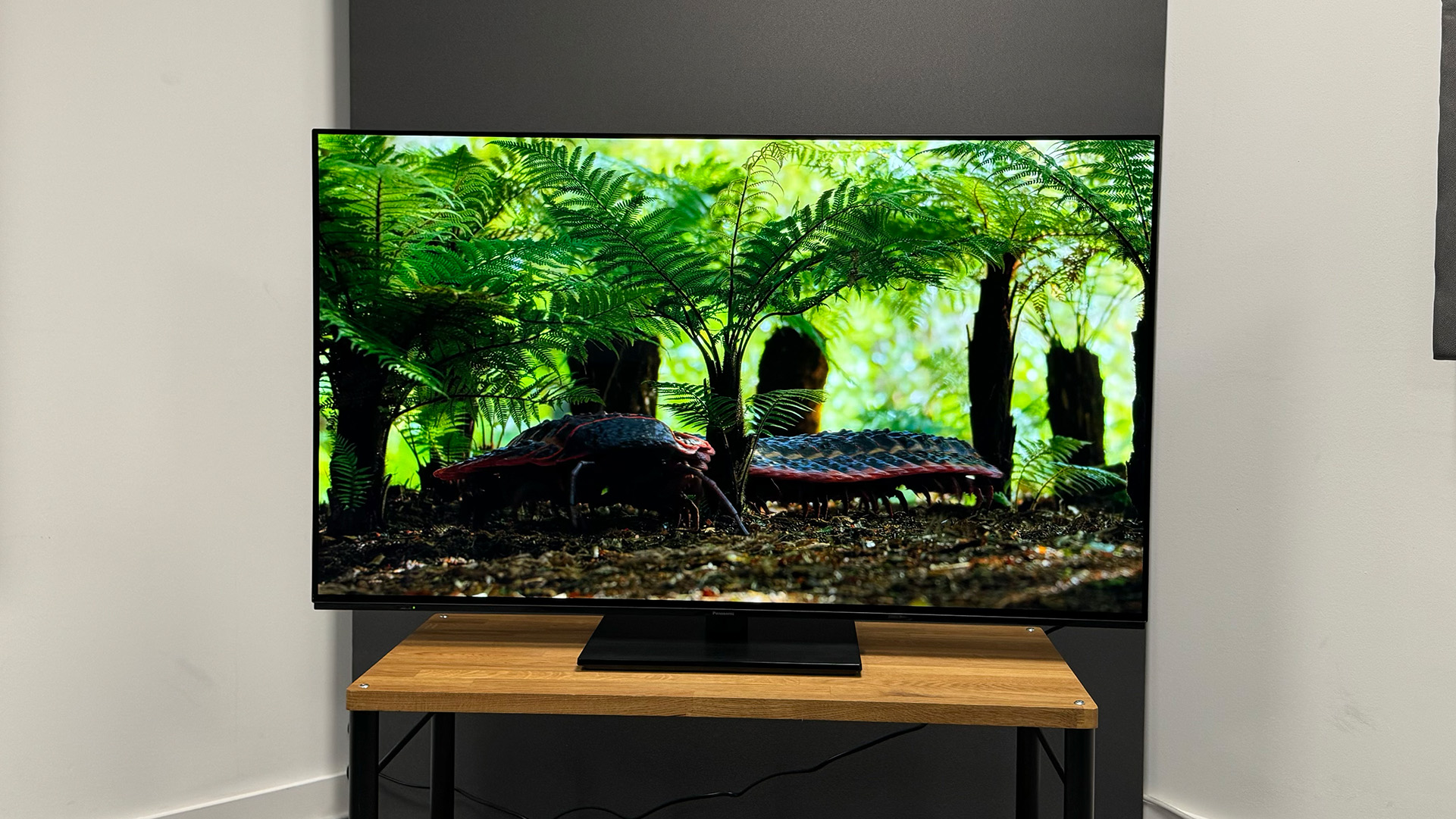
Screen size 55 inches (also available in 42 and 48 inches)
Type OLED
Resolution 4K
HDR formats HLG, HDR10, HDR10+, Dolby Vision
Operating system My Home Screen 8.0
HDMI inputs x 4 (2 x 48Gbps HDMI 2.1)
Gaming features 4K/120Hz, VRR, ALLM, Dolby Vision gaming
ARC/eARC eARC
Optical output? Yes
Dimensions (hwd, without stand) 71 x 123 x 6.9cm
Like all the modern Panasonic sets we’ve reviewed, the chip is focused on creating as realistic an 'as the director intended' picture quality as possible. This brings the same intelligent optimisation features as the MZ1500. Specifically, the MZ980 can tweak its picture settings on the fly to deal with any ambient light in the room – though as ever, we strongly recommend watching films in the dark, or with as little light pollution as possible if you want the best home cinema experience possible.
HDR support is also identical and bountiful, with Dolby Vision, HDR10+, standard HDR10 and HLG all on board. As an added perk, Dolby Vision IQ and HDR10+ Adaptive, the versions of their respective formats that adapt automatically to ambient lighting conditions, are also supported. Dolby Vision gaming, which is still a relative rarity, is also featured and will be a boon for Xbox Series X/S gamers.
The MZ980 features a solid, but not class-leading, gaming feature set overall. The True Game mode works the same way it does on the MZ1500 and is best described as a Filmmaker mode for gamers. It uses the HCX Pro AI processor to improve colour accuracy and contrast when gaming. It’s aided by source-orientated HDR tone mapping, which works to further enhance colour accuracy when playing games in HDR.
VRR is supported in the Nvidia G-Sync, AMD Freesync and standard formats, which helps reduce screen tearing with games that support it.
This is all great, but the TV does repeat one of our biggest problems with most modern TVs – specifically it only features two HDMI 2.1 ports capable of handling 4K/120Hz. One of those also doubles as the eARC port, which will be unusable for a games console if you need to use it for a soundbar or AV receiver. While the other two HDMI inputs do support ALLM, they don't support VRR (or 120Hz, of course), so aren't ideal for serious gaming.
Any modern games console or PC needs an HDMI 2.1 input to run at full speed. Dolby Atmos requires an eARC (or ARC) input. So if you have more than one hardcore games machine and an Atmos soundbar, you’re going to find yourself constantly swapping cables with only two slots. This is doubly annoying on the MZ980 due to the lack of a pivot stand, which makes swapping cables even more laborious. The LG C3 and G3’s inclusion of four HDMI 2.1 inputs is one key reason why we recommend them as the best gaming TVs for current-generation console owners.
The only other minor issue with the MZ980 is that, like all Panasonic TVs, it runs My Home Screen 8.0 software. The UI itself isn’t too problematic, but its app selection is a little behind rival platforms such as Android TV and WebOS.
Mainstays such as Netflix, Disney Plus and Amazon Prime Video are available and work well. But there are some odd omissions. You only get Apple TV+ rather than the full version of Apple TV – so you can’t rent or purchase movies from Apple’s store. Specialist services including Shudder and Crunchyroll aren’t available. And as a final minor disappointment GeForce Now, Steam Link and other popular gaming subscription services are also notably absent.
Picture
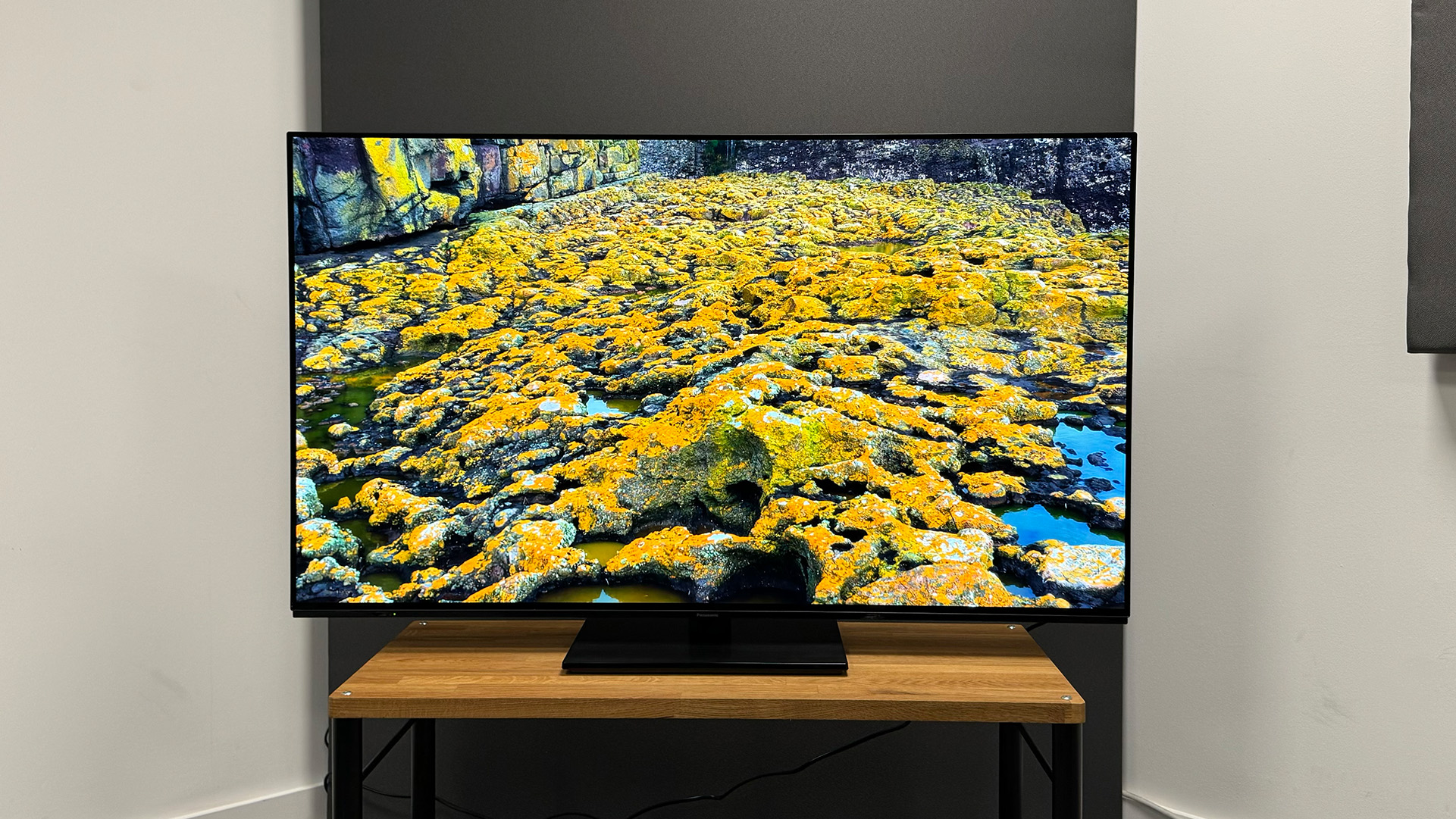
Based on the spec sheet, the MZ980 at first glance looks very similar to the MZ1500 when it comes to panel tech.
And the moment we powered the two up in our test rooms, it was apparent they came from the same family. As we said in our MZ1500 review, the best word to describe picture performance is 'balanced'.
Starting with HDR10 performance with both sets in Filmmaker mode running Blade Runner 2049, watching the opening scene the 980 offers the same warm accurate picture as the 1500 and 2000, with the dust-filled farm and Dave Bautista’s skin tones all holding wonderful warmth and detail creating a highly immersive experience.
During the heated opening fight, Panasonic's motion handling deals with the frantic scene well with the movements looking smooth and carrying the heft you’d expect as Bautista throws Ryan Gosling across the dust-filled house. The same is true when we move on to a later scene where a flying car zooms over LA. In it, the scene looks entirely natural and free of the shimmering and artificial soap opera effect that plagues many cheaper sets.
Detail levels are also fantastic, with every hair on Gosling's head and stray stitch in his knitted jumper looking wonderfully accurate and natural during the subsequent interview scene.
However, there are some noticeable differences between the MZ980 and MZ1500. Specifically, the MZ1500 is capable of going noticeably brighter and offers significantly more detail in bright scenes than the MZ980. In Blade Runner 2049 this is noticeable in the cityscape with the neon signs featuring more pop and definition.
And this is the biggest difference between it and the MZ1500 when it comes to picture quality. There’s a hardware reason for this. Specifically, the Panasonic MZ1500 has a Master OLED Pro panel – which has extra heat dispersion layers that mean it can produce a brighter image.
In Blade Runner the difference is subtle but noticeable. But moving to other brighter movies it makes a much bigger impact. This is especially true when we switch to testing Dolby Vision's performance during Top Gun: Maverick. In the opening test flight scene there is a much greater contrast across the skyline and a wider hue of colours due to the increased brightness. Sections of the jet flames that are full of detail and flickering colours come out as pure white on the MZ980.
Pan, a terrible movie that’s useful for testing peak brightness performance as it's mastered to 4000 nits, also reveals the disparity in max brightness between the two sets. During a particularly bright scene where the pirate ship flies through the sky, the MZ980 can’t deliver the same hue of clouds within the setting sun as the MZ1500, losing detail as a result.
Does this mean the picture is bad? Not by any stretch of the imagination. Despite not matching the peak brightness, skin tones are wonderfully accurate and the picture is full of detail, with every grain of sand and crease in Maverick’s jacket looking authentic and natural.
Colours and motion handling are excellent and the set otherwise is very similar to the 1500. Switching to the famously dark The Batman, shadow detail is excellent as you see every detail of the hero’s armour and stray reflection as he trudges through the shadows to catch his prey.
Moving to SDR content, the MZ980 and MZ1500 become hard to differentiate between. Watching True Grit, both upscale the movie well, but although some detail is lost in the darkest parts of the picture, the MZ980 delivers excellent results, retaining the grainy quality the director intended.
If you care about authenticity, the MZ980 is a good option and in many ways offers superior performance to the LG C3. But the issue is that the lack of brightness and focus on subtlety means that, for many fans, the picture can at times lack the pop and dynamism seen on the MZ1500, let alone the Sony A80L, which costs the same amount.
The issue is even more pronounced on the MZ980 due to the lower brightness which makes the picture at times look slightly flat and dull. Throughout all our tests our eye was naturally drawn to the Sony.
As a result, unless colour accuracy and authenticity are the be-all and end-all of your priority list, we’d recommend the more dynamic, exciting experience you get on the Sony over the MZ980.
Sound
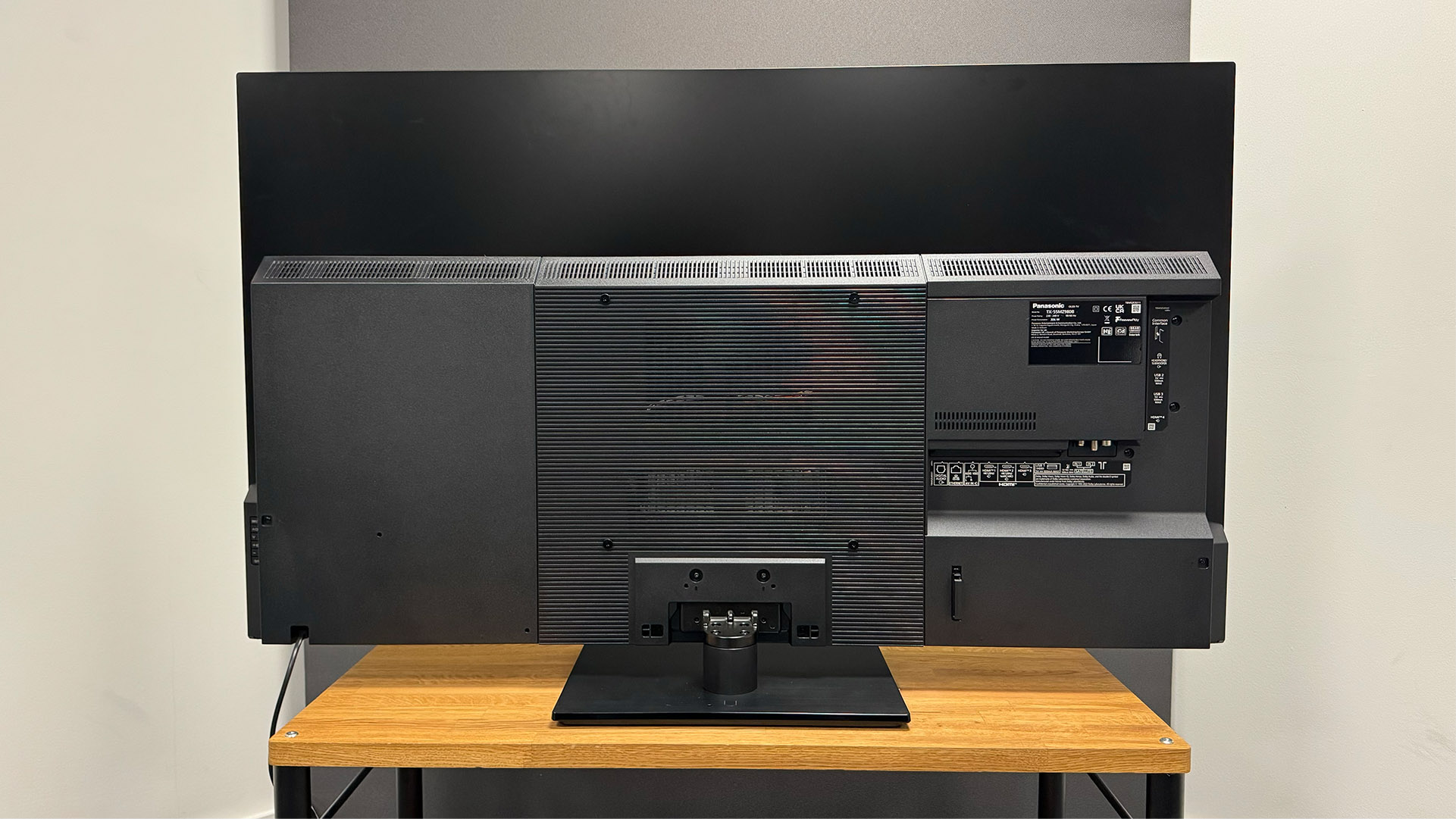
The MZ980 doesn’t have the speaker bar seen on Panasonic’s more expensive OLED sets. Instead, it comes loaded with a basic system consisting of two down-firing speakers that run at 15W per channel.
We always recommend investing in a soundbar or speaker system when buying a TV, especially one at this price. And that’s particularly true with the MZ980, whose speakers aren’t great even by in-built TV standards.
Running our standard stress test, the start of chapter two in Blade Runner 2049, the speakers immediately struggle. Speaker rattle creeps in at even moderate volumes and there’s some distortion during the particularly bass-heavy thumps of the movie’s soundtrack. The issues repeats when we play the test segment of Top Gun: Maverick, with the sonic boom as he zooms over the visiting general’s entourage yielding the same results.
The speakers are also undeniably slightly thin sounding, despite offering more dynamism and energy than the C3, they constantly sound strained. This is especially true compared with the A80L, which offers more detailed sound with a much more pronounced sense of direction. By comparison, the MZ980’s audio constantly sounds as if it is coming from behind the set, which is no surprise given the speakers' placement there.
The package does yield watchable results during less intense scenes, with the speakers delivering suitable clarity and detail for you to keep track of regular conversations. Batman’s rumbling threats to the Penguin are nicely clear and have a sense of energy and menace.
But the audio quickly becomes garbled and lacks space and any sense of direction once the Batmobile’s engine throttles up for the movie’s iconic car chase.
As we found on the LG C3 and most other sets this price, even a mid-range soundbar such as the Sonos Beam (Gen 2) will yield infinitely superior results.
Verdict

The MZ980 is a good TV but its price makes it slightly difficult to wholeheartedly recommend. Though it offers the wonderful picture authenticity Panasonic is famous for, the fact the MZ1500 costs only a little more and offers better brightness levels and a generally more immersive picture makes it a better option for fans of the brand.
For buyers not committed to Panasonic, the award-winning Sony A80L is a more compelling package holistically, offering a punchier, more dynamic picture and much better audio.
For buyers on a budget, and in particular gamers, the LG C3 is also cheaper and has better connectivity, making it a more attractive option.
SCORES
- Picture 4
- Sound 3
- Features 4
MORE:
Also consider reading our Sony XR-55A80L review
Check out our picks of the best OLED TVs money can buy
These are the best TVs we’ve tried and tested

Alastair is What Hi-Fi?’s editor in chief. He has well over a decade’s experience as a journalist working in both B2C and B2B press. During this time he’s covered everything from the launch of the first Amazon Echo to government cyber security policy. Prior to joining What Hi-Fi? he served as Trusted Reviews’ editor-in-chief. Outside of tech, he has a Masters from King’s College London in Ethics and the Philosophy of Religion, is an enthusiastic, but untalented, guitar player and runs a webcomic in his spare time.
